Equipment principle and function
Q1: What is the working principle of battery charging and discharging testing equipment?
Answer: By simulating the charging and discharging process of batteries in different application scenarios, utilizing electronic loads and power modules, and accurately controlling parameters such as current and voltage, the performance of batteries can be evaluated and tested.
Q2: How can the device achieve precise control over the battery charging and discharging process?
Answer: Adopting high-precision current and voltage control circuits, combined with advanced algorithms and feedback mechanisms, real-time monitoring and adjustment of charging and discharging parameters to ensure accuracy.
Q3: What battery types can it test?
Answer: Common types include lithium-ion batteries, lead-acid batteries, nickel hydrogen batteries, etc. Different devices may have different application ranges.
Q4: Can multiple batteries be tested simultaneously?
Answer: Some devices have multi-channel functionality and can perform independent or grouped testing on multiple batteries simultaneously.
Q5: What practical usage scenarios can the device simulate?
Answer: Such as fast charging, slow charging, charging and discharging under different temperature environments, pulse discharge, etc.
Equipment operation and settings
Q6: How to correctly connect the battery to the testing equipment?
Answer: According to the equipment manual, ensure that the positive and negative poles are connected correctly, have good contact, and avoid short circuits.
Q7: How to set the charging and discharging parameters?
Answer: According to the specifications and testing requirements of the battery, set parameters such as voltage, current, and cutoff conditions on the device interface.
Q8: How to set the number of test cycles?
Answer: In the loop settings menu of the device, enter the desired number of loops.
Q9: Can automatic stop conditions be set?
Answer: Yes, the automatic stop conditions are usually set based on parameters such as battery voltage, capacity, and time.
Q10: How to view real-time charging and discharging data?
Answer: Real time viewing of voltage, current, capacity, and other data can be done through the device's display screen or software interface connected to a computer.
Test Results and Analysis
Q11: How to interpret the charge discharge curve?
Answer: The charge discharge curve reflects the changes in voltage and current of the battery over time during the charge discharge process. By analyzing the slope, plateau, and other characteristics of the curve, the performance of the battery can be understood.
Q12: How to judge the performance of a battery from test results?
Answer: It mainly depends on indicators such as battery capacity, charging and discharging efficiency, internal resistance, and cycle life. High performing batteries usually have higher capacity, lower internal resistance, and longer cycle life.
Q13: Can the device automatically generate test reports?
Answer: Some advanced devices have the function of automatically generating reports, which can generate detailed reports based on preset templates and test data.
Q14: How to analyze the internal resistance changes of batteries?
Answer: By measuring the internal resistance of the battery under different charging and discharging states and observing its changing trend, an increase in internal resistance may indicate a decrease in battery performance.
Q15: How to evaluate the cycle life of a battery?
Answer: By conducting multiple charge discharge cycle tests and recording the number of cycles when the battery capacity drops to a certain level, the cycle life can be evaluated.
Equipment maintenance and upkeep
Q16: How often does the equipment need to be calibrated?
Answer: It is generally recommended to calibrate at least once a year to ensure the accuracy of the test results.
Q17: How to perform daily cleaning of equipment?
Answer: Use a clean soft cloth to wipe the surface of the equipment to prevent dust and debris from entering the interior of the equipment.
Q18: How to troubleshoot when equipment malfunctions?
Answer: First, check if the device is connected properly, then check for error codes or prompt messages, and troubleshoot according to the device manual.
Q19: What does regular maintenance include?
Answer: This includes checking circuit connections, cleaning the cooling fan, replacing worn parts, etc.
Q20: What are the vulnerable parts of the equipment?
Answer: Common vulnerable parts include battery connection wires, power resistors for electronic loads, capacitors for power modules, etc.
Safety precautions
Q21: What safety precautions should be taken when operating equipment?
Answer: Ensure that the equipment is well grounded, avoid operating in humid environments, and prevent overcharging, overdischarging, and short circuiting of the battery.
Q22: How to prevent battery overheating?
Answer: Control the charging and discharging current and ambient temperature to ensure that the equipment has good heat dissipation conditions.
Q23: Does the device have overcurrent protection function?
Answer: Most regular equipment has overcurrent protection function, which automatically cuts off the circuit when the current exceeds the set value.
Q24: How to deal with battery leakage issues?
Answer: Stop testing immediately, move the battery to a safe area, and properly dispose of the leaked battery and electrolyte according to relevant regulations.
Q25: Can the device open the chassis during operation?
Answer: No, there is a high-voltage circuit inside the device during operation, and opening the chassis may pose a risk of electric shock.
Equipment selection and procurement
Q26: How to choose suitable battery charging and discharging testing equipment according to needs?
Answer: Consider factors such as battery type, testing parameter range, accuracy requirements, number of channels, and degree of automation.
Q27: What are the differences between devices from different brands?
Answer: There are differences in performance, accuracy, stability, software functionality, after-sales service, and other aspects.
Q28: What is the price range of the equipment?
Answer: Prices range from a few thousand yuan to several hundred thousand yuan depending on the functionality and performance of the device.
Q29: What after-sales services should be considered when purchasing equipment?
Answer: Including warranty period, repair response time, technical support, training, etc.
Q30: Can I try the device first before purchasing?
Answer: Some suppliers provide trial services, and we can negotiate with them whether it is possible to try before purchasing.
Software and Communication
Q31: What are the functions of the device's software?
Answer: In addition to setting test parameters and viewing data, it may also include functions such as data analysis, curve drawing, report generation, remote control, etc.
Q32: How to connect the device to the computer?
Answer: Communication can usually be achieved by connecting through interfaces such as USB, Ethernet, or serial port, and installing the corresponding drivers and software.
Q33: What communication protocols does the device support?
Answer: TCP/IP protocol.
Q34: Can devices be remotely controlled through the network?
Answer: Not currently supported
Q35: How to upgrade software?
Answer: Download the latest software version from the official website of the device manufacturer and follow the upgrade instructions.
Special testing requirements
Q36: How to conduct high and low temperature charge and discharge tests on batteries?
Answer: The device needs to be placed in an environmental box with temperature control function, set the required temperature, and then operate according to the conventional charging and discharging test steps.
Q37: How to test the pulse discharge performance of batteries?
Answer: Set pulse discharge parameters on the device, including pulse width, frequency, discharge current, etc., and then conduct testing.
Q38: Can the self discharge rate of the battery be tested?
Answer: Yes, the self discharge rate can be calculated by measuring the voltage or capacity change of the battery over a certain period of time.
Q39: How to conduct balance testing on battery packs?
Answer: Use devices with battery pack balancing function to monitor and adjust the voltage and capacity of each battery during the charging and discharging process to achieve a balanced state.
Q40: Can the performance of batteries be tested at different discharge depths?
Answer: Yes, different discharge cut-off voltages can be set to simulate different discharge depths, and then charge and discharge tests can be conducted.
Industry standards and regulations
Q41: What industry standards do battery charging and discharging testing equipment need to comply with?
Answer: Relevant standards such as IEC, GB, UL, etc. depend on the battery type and application field.
Q42: What are the certifications for devices?
Answer: Common certifications include CE certification, FCC certification, RoHS certification, etc.
Q43: How to ensure that the test results comply with industry standards?
Answer: Regularly calibrate equipment, operate according to standard testing methods and procedures, and use battery samples that meet the standards.
Q44: What are the requirements for equipment accuracy in industry standards?
Answer: Different standards have different requirements for accuracy. Generally speaking, voltage accuracy is required to be between ± 0.1% and ± 1%, and current accuracy is required to be between ± 0.2% and ± 2%.
Q45: What are the restrictions of regulations on battery testing?
Answer: Regulations may have strict limitations on the safety performance, environmental requirements, and other aspects of batteries. Testing equipment needs to be able to meet these requirements, such as regulations for safety testing of batteries such as overcharging, overdischarging, and short circuits.
New Technologies and Development Trends
Q46: What are the new technologies for battery charging and discharging testing equipment?
Answer: If artificial intelligence algorithms are used for parameter optimization and fault diagnosis, high-precision sensor technology, new power conversion circuits, etc.
Q47: What is the development trend of future devices?
Answer: Developing towards higher accuracy, faster testing speed, more intelligent operation and data analysis, smaller size, and lower energy consumption.
Q48: How to keep up with the development of equipment technology?
Answer: Pay attention to industry trends, participate in technical seminars and training courses, maintain communication with equipment manufacturers, and stay informed about new technologies and products in a timely manner.
Q49: What impact does new technology have on battery testing?
Answer: It can improve the accuracy and efficiency of testing, analyze the performance and faults of batteries more deeply, and provide better support for the research and application of battery technology.
Q50: What benefits will the intelligent development of devices bring?
Answer: It can achieve functions such as automatic testing, intelligent analysis, remote monitoring, etc., reduce manual operation errors, improve work efficiency, and facilitate user management and maintenance of equipment.
The relationship between battery knowledge and testing
Q51: What is the relationship between battery capacity and charge discharge testing?
Answer: Charging and discharging tests can accurately measure the actual capacity of the battery and understand the capacity changes of the battery under different charging and discharging conditions.
Q52: What impact does the voltage platform of the battery have on testing?
Answer: The voltage platform reflects the charging and discharging characteristics of the battery, and the performance and status of the battery can be judged based on the changes in the voltage platform during testing.
Q53: What impact does the internal resistance of a battery have on the charging and discharging process?
Answer: Internal resistance can cause the battery to generate heat during charging and discharging, reducing charging and discharging efficiency, and as the internal resistance increases, the performance of the battery will gradually decline.
Q54: How to evaluate the formation effect of batteries through charging and discharging tests?
Answer: Observe the voltage, current changes, and capacity recovery of the battery during the first charge and discharge process to determine whether the formation is sufficient.
Q55: What is the relationship between the cycle life of a battery and the depth of charge and discharge?
Answer: Generally speaking, the deeper the depth of charge and discharge, the shorter the cycle life of the battery. This relationship can be studied through cycling tests at different depths of charge and discharge.
Equipment compatibility
Q56: Is the device compatible with different brands of battery management systems?
Answer: Some devices can communicate and test with different brands of battery management systems by being compatible with different communication protocols and interfaces.
Q57: Can it be integrated with automated production lines?
Answer: Some devices with automated interfaces and communication functions can be integrated with automated production lines to achieve automated processes for battery testing.
Q58: How to solve the compatibility issue between equipment and other testing instruments?
Answer: Compatibility between devices can be achieved through unified communication protocols, interface standards, and data formats. If necessary, adapters or intermediate software can be used for coordination.
Q59: What is the battery size and specification range supported by the device?
Answer: Different devices support different battery sizes and specifications, ranging from small button batteries to large power battery packs.
Q60: Can we test alien batteries?
Answer: Some devices can adapt to the testing of irregular batteries by customizing fixtures or using universal fixture designs.
Accuracy and stability of equipment
Q61: What factors affect the accuracy of the equipment?
Answer: Including factors such as circuit design, component quality, temperature stability, calibration accuracy, etc.
Q62: How to improve the accuracy of equipment?
Answer: The use of high-precision components, optimized circuit design, regular calibration, and temperature compensation methods can improve the accuracy of equipment.
Q63: How to ensure the stability of the equipment?
Answer: The stability of the equipment is ensured through good heat dissipation design, stable power supply, high-quality hardware manufacturing, and software stability optimization.
Q64: What impact does long-term operation have on equipment accuracy and stability?
Answer: Long term operation may cause equipment to heat up, affecting accuracy, and may also cause component aging, reducing stability. Therefore, regular maintenance and inspection are necessary.
Q65: How to evaluate the accuracy and stability of equipment?
Answer: The accuracy and stability of the equipment can be evaluated through multiple repeated tests, comparative tests with standard batteries, and long-term operation tests.
Data Storage and Management
Q66: How does the device store test data?
Answer: Data can usually be stored in the internal memory of the computer connected to the device.
Q67: What is the format of data storage?
Answer: Common formats include CSV, TXT, PDF, etc., which facilitate data analysis and processing.
Q68: How to manage a large amount of test data?
Answer: A database management system can be used to classify, retrieve, and backup data for quick search and analysis.
Q69: How long can data be saved?
Answer: It depends on the capacity and performance of the storage device. Generally speaking, if backed up and maintained regularly, data can be saved for many years.
Q70: How to prevent data loss?
Answer: Regular backup of data, use of redundant storage devices, and setting up data protection mechanisms are adopted to prevent data loss.
Scalability of equipment
Q71: Can the device expand the number of channels?
Answer: Some devices support expanding the number of channels by adding expansion modules to meet the need to test more batteries simultaneously.
Q72: Can new testing features be added?
Answer: If the software and hardware architecture of the device support it, new testing functions can usually be added through software upgrades or adding hardware modules.
Q73: What are the benefits of device scalability for users?
Answer: The functionality and performance of the device can be flexibly expanded according to the user's business development and changes in testing needs, avoiding duplicate investments.
Q74: What should be noted when expanding device functionality?
Answer: It is necessary to ensure that the extended modules or software are compatible with the original device, and to consider whether the overall performance and stability of the device are affected.
Q75: How to evaluate the scalability of equipment?
Answer: You can check the technical specifications of the device to understand whether it supports expansion and the ways and limitations of expansion, or consult the technical personnel of the device manufacturer.
The impact of environmental factors on equipment
Q76: What is the impact of temperature on the test results of equipment?
Answer: Temperature changes may cause changes in battery performance, as well as affect the accuracy and stability of the equipment. Generally, testing needs to be conducted within the specified temperature range.
Q77: What impact does humidity have on equipment?
Answer: High humidity may cause internal circuit short circuits, corrosion, and other issues, affecting the normal operation of the equipment. Therefore, the equipment usually needs to be used in a dry environment.
Q78: How to control the temperature and humidity of the testing environment?
Answer: Air conditioning, humidifiers, dehumidifiers and other equipment can be used to adjust the temperature and humidity of the testing environment, or the equipment can be placed in a laboratory with temperature and humidity control functions.
Q79: What are the precautions for using equipment at different altitudes?
Answer: The air in high-altitude areas is thin, and the heat dissipation conditions may vary. Attention should be paid to the heat dissipation of the equipment, and special adjustments may be needed to ensure its normal operation.
Q80: How does electromagnetic interference affect equipment?
Answer: Electromagnetic interference may cause inaccurate measurement data and communication failures in equipment, so equipment needs to have a certain electromagnetic compatibility design to reduce the impact of external interference.
Calibration and traceability of equipment
Q81: What is the process of equipment calibration?
Answer: Generally, it includes selecting a suitable calibration standard source, connecting equipment to the standard source, setting calibration parameters, conducting calibration measurements, adjusting equipment parameters to meet calibration standards, and other steps.
Q82: What standard equipment is required for calibration?
Answer: Common standard equipment includes high-precision voltage sources, current sources, resistance boxes, etc., which require calibration and traceability by higher-level metrology institutions.
Q83: How to ensure the accuracy and reliability of calibration?
Answer: Use certified calibration standard equipment, operate according to the prescribed calibration process and methods, regularly check and maintain calibration equipment, etc.
Q84: How is the equipment calibration cycle determined?
Answer: It is generally recommended to calibrate once a year based on factors such as equipment usage frequency, accuracy requirements, and stability. However, for equipment that is frequently used or requires high accuracy, a shorter calibration cycle may be required.
Q85: What does traceability of calibration results mean?
Answer: It refers to the ability of calibration results to be linked to measurement benchmarks through an uninterrupted comparison chain with specified uncertainty, to ensure the accuracy and consistency of measurement results.
Training and use of equipment
Q86: How can new users quickly get started operating the device?
Answer: Attend the training courses provided by the equipment manufacturer, read the operation manual and instructions of the equipment, and conduct practical operation exercises.
Q87: What does equipment training include?
Answer: It usually includes the principles, operating methods, parameter settings, data processing, safety precautions, and other aspects of the equipment.
Q88: Are there any online training resources available for learning?
Answer: Some device manufacturers' official websites may provide online training videos, tutorials, and other resources, and relevant learning materials can also be obtained through professional technical forums and websites.
Q89: How to avoid equipment damage caused by improper operation?
Answer: Strictly follow the operation manual to avoid misoperation. Do not change important parameters arbitrarily when unfamiliar with the equipment functions. Regularly maintain and inspect the equipment.
Q90: Is the device difficult to operate?
Answer: For personnel familiar with electronic device operation and battery testing knowledge, it is generally not difficult to master, but for beginners, it may require some learning and training time, and the difficulty of operating the equipment also varies depending on the complexity of the equipment.
Transportation and installation of equipment
Q91: What should be noted during the transportation of equipment?
Answer: It is necessary to use original packaging or shock-absorbing materials to properly package and secure the equipment to prevent shaking; Avoid high temperature, humidity, and strong vibration environments; Disconnect all connections before transportation and remove removable components for separate protection; Choose legitimate logistics and confirm transportation insurance. Check the appearance and completeness of accessories as soon as they arrive.
Q92: What are the environmental requirements for equipment installation?
Answer: It should be placed in a dry, ventilated, and non corrosive gas environment, with a temperature of 0 ℃~40 ℃ and a humidity of ≤ 70% RH. It should be kept away from strong electromagnetic interference sources (such as motors and transformers); The installation platform should be flat and stable, with sufficient heat dissipation space reserved (at least 10cm in front, back, left, right).
Q93: How to correctly connect the power and communication lines of the device?
Answer: The power supply needs to use a power cord of the specified specifications of the equipment to ensure reliable grounding; When connecting communication cables (USB/Ethernet/serial port), power off operation is required to avoid live plugging and unplugging; After connection, check if the interface is secure and confirm normal communication through device self-test.
Q94: What debugging steps are required after installation?
Answer: ① Before powering on, check if all components are installed correctly; ② Perform a device self-test after booting up to confirm that the fan, display screen, and buttons are functioning properly; ③ Connect computers, test software communication and data synchronization; ④ Run standard testing procedures (such as constant current charging and discharging) to verify the accuracy of parameter control.
Q95: Does the equipment require professional installation?
Answer: It is recommended that the installation be carried out by the manufacturer's technical personnel or trained professionals to ensure that the power wiring, grounding, and communication configuration comply with the specifications. If the user installs it themselves, they must strictly follow the instructions and contact technical support when encountering complex problems such as multi-channel networking and automation integration.
Q96: What problems may arise from improper transportation or installation?
Answer: It may cause internal components of the device to loosen (such as circuit boards, wiring terminals), damage to the display screen or interface, parameter drift, etc. In severe cases, it may result in the device being unable to start or testing accuracy failure. It is necessary to contact after-sales testing in a timely manner.
Q97: Do devices require special handling for use in high-altitude areas?
Answer: In high-altitude areas, the air is thin and the heat dissipation efficiency of equipment decreases. It is necessary to reduce the load power or strengthen ventilation and heat dissipation; Some equipment requires recalibration of pressure related parameters (such as temperature compensation), please refer to the manufacturer's instructions for use in high-altitude environments for specific details.
Q98: How to handle the grounding of equipment during installation?
Answer: Use a yellow green grounding wire with a cross-sectional area of ≥ 2.5mm ² to directly connect the equipment grounding terminal to the laboratory grounding strip, ensuring a short and impedance free grounding path; Avoid sharing ground wires with other high-power devices and regularly check for loose grounding connections.
Q99: What should I do if the equipment cannot be turned on after transportation?
Answer: First, check if the power connection is normal (such as if the socket is powered on and the power cord is intact); If the power supply is normal, check if the equipment fuse is blown (if any) and replace it with a fuse of the same specification; If it still cannot be turned on, it may be due to transportation vibration causing internal wiring to detach, and the manufacturer needs to be contacted for disassembly and testing.
Q100: How to troubleshoot abnormal test data after device installation?
Answer: ① Confirm that the positive and negative terminals of the battery are connected correctly and in good contact; ② Check if the test parameter settings comply with the battery specifications (such as cut-off voltage and current range); ③ Calibrate the zero point of the equipment (the voltage/current should be close to 0 when unloaded); ④ If the difference exceeds the limit compared to the standard battery test results, the equipment needs to be recalibrated or technical support needs to be contacted.
Table of Contents >
- 1. Equipment principle and function
- 2. Equipment operation and settings
- 3. Test Results and Analysis
- 4. Equipment maintenance and upkeep
- 5. Safety precautions
- 6. Equipment selection and procurement
- 7. Software and Communication
- 8. Special testing requirements
- 9. Industry standards and regulations
- 10. New Technologies and Development Trends
- 11. The relationship between battery knowledge and testing
- 12. Equipment compatibility
- 13. Accuracy and stability of equipment
- 14. Data Storage and Management
- 15. Scalability of equipment
- 16. The impact of environmental factors on equipment
- 17. Calibration and traceability of equipment
- 18. Training and use of equipment
- 19. Transportation and installation of equipment

 1000V-1500V High Voltage High Current Battery Testing System
1000V-1500V High Voltage High Current Battery Testing System
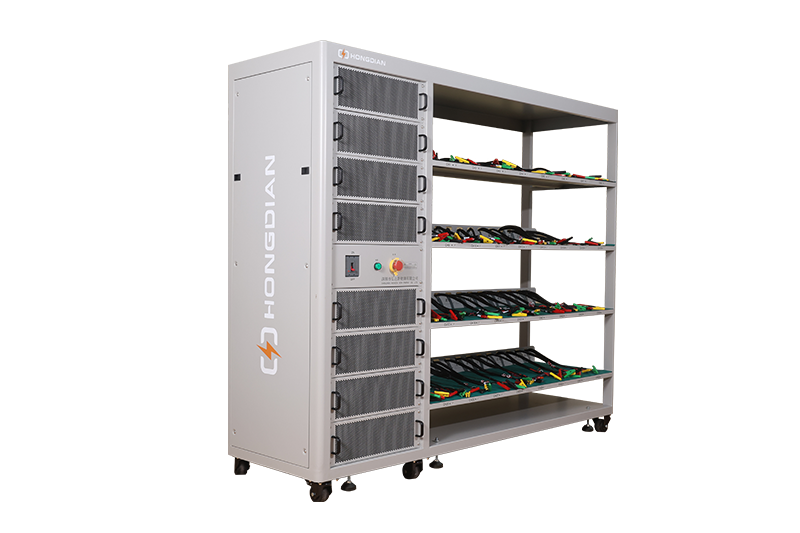 32/48 channel battery charging and discharging test integrated battery cabinet
32/48 channel battery charging and discharging test integrated battery cabinet
 40 channel battery charging and discharging test integrated battery cabinet
40 channel battery charging and discharging test integrated battery cabinet
 64 channel battery charging and discharging test integrated battery cabinet
64 channel battery charging and discharging test integrated battery cabinet
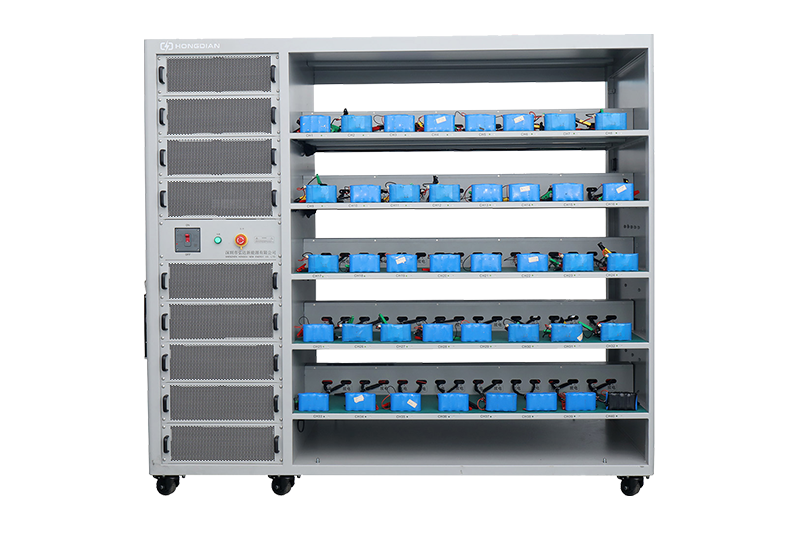 80 channel battery charging and discharging test integrated battery cabinet
80 channel battery charging and discharging test integrated battery cabinet
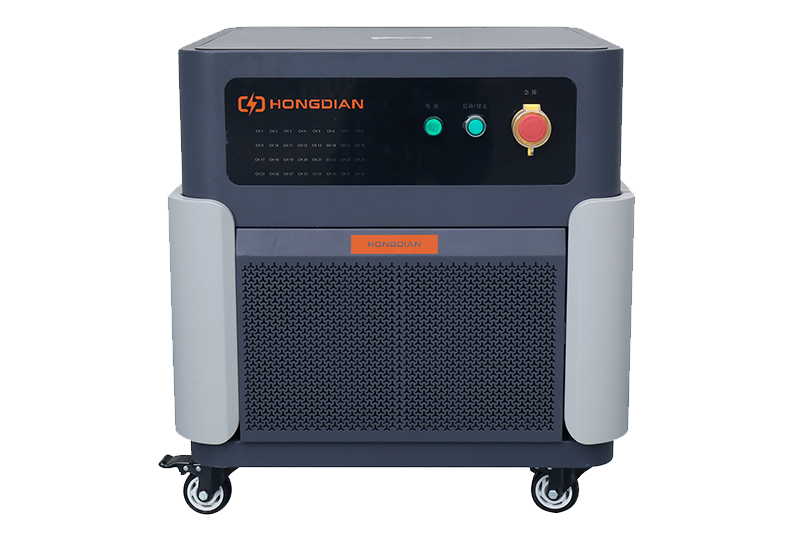 High-Precision Battery Testing System for Enhanced Performance Monitoring 30V/60V/100V/120V
High-Precision Battery Testing System for Enhanced Performance Monitoring 30V/60V/100V/120V
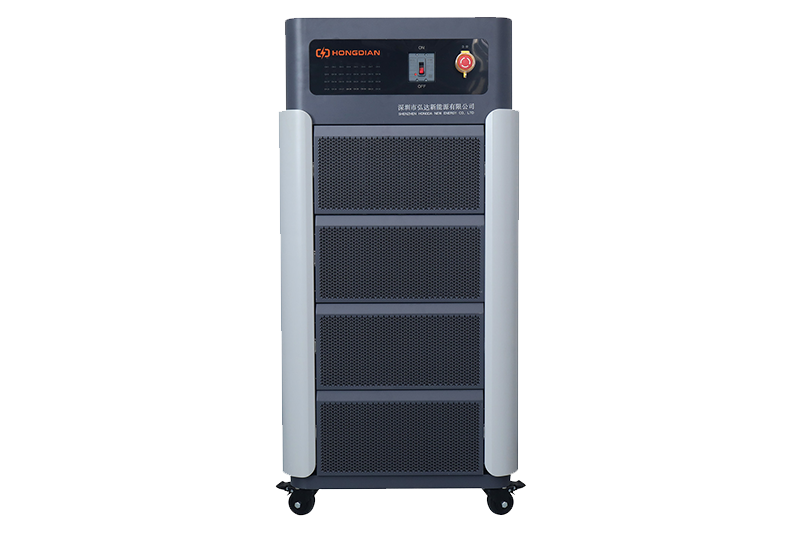 High-Precision Battery Charge Discharge Test Systems for EV Manufacturers
High-Precision Battery Charge Discharge Test Systems for EV Manufacturers
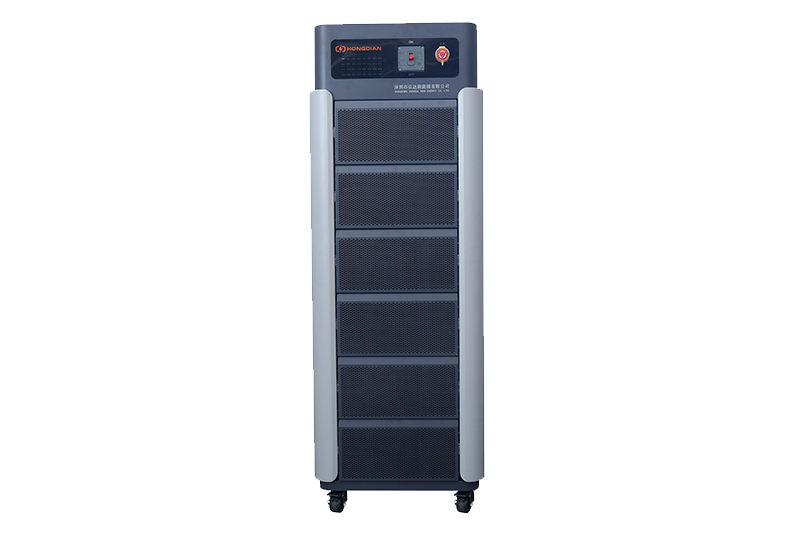 Precision Battery Test Racks for Cell Capacity & Internal Resistance Measurement
Precision Battery Test Racks for Cell Capacity & Internal Resistance Measurement
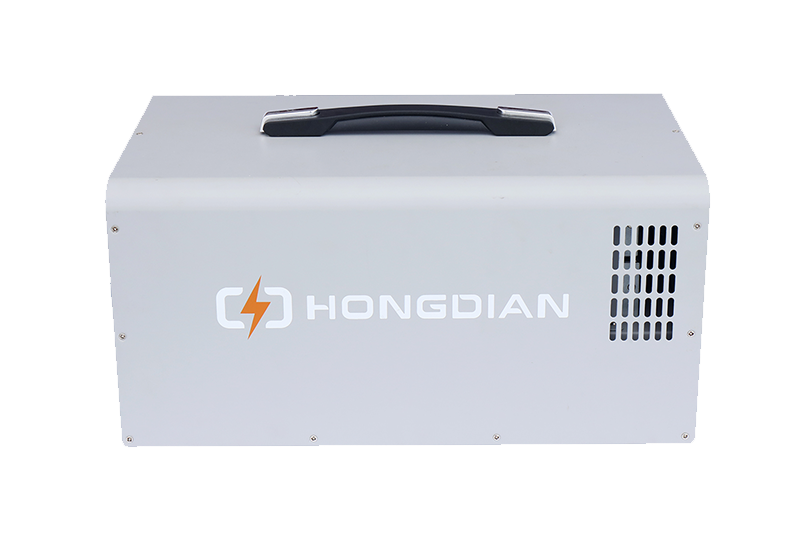 Multi-Channel Battery Testing Equipment for Parallel Performance Analysis
Multi-Channel Battery Testing Equipment for Parallel Performance Analysis

